|
Books Should Be Free Loyal Books Free Public Domain Audiobooks & eBook Downloads |
|
|
Books Should Be Free Loyal Books Free Public Domain Audiobooks & eBook Downloads |
|
Historical Fiction |
|---|
Book type:
Sort by:
View by:
|
By: Charles King (1844-1933) | |
|---|---|
 Starlight Ranch And Other Stories Of Army Life On The Frontier
Starlight Ranch And Other Stories Of Army Life On The Frontier
Five stories of Army life in the mid to late 19th century. Charles King (1844 – 1933) was a United States soldier and a distinguished writer. He wrote and edited over 60 books and novels. Among his list of titles are Campaigning with Crook, Fort Frayne, Under Fire and Daughter of the Sioux. | |
By: Evaleen Stein (1863-1923) | |
|---|---|
 Gabriel and the Hour Book
Gabriel and the Hour Book
Brother Stephen has the heart of an artist and wishes to leave the abbey to travel and see the world. However, King Louis has decreed that an "hour book" be made for his bride, Lady Anne, which in turn causes the Abbott to refuse Brother Stephen's request to leave the brotherhood as his illuminations are the most beautiful, and as such, he desires that Brother Stephen should be the one to make the hour book. This decision angers Brother Stephen. Will Brother Stephen stay at the abbey and carry out his task or will he refuse and bring about a ban against him, a serious matter indeed... | |
By: George W. Ogden (1871-1966) | |
|---|---|
 Trail's End
Trail's End
When an agriculture professor wanders into a wicked Kansas cowtown in order to experiment raising wheat, both the professor and the town get more than they bargain for. A wild and wooly Western. | |
By: Thomas Wentworth Higginson (1823-1911) | |
|---|---|
 Tales of the Enchanted Islands of the Atlantic
Tales of the Enchanted Islands of the Atlantic
The sea has always been, by the mystery of its horizon, the fury of its storms, and the variableness of the atmosphere above it, the foreordained land of romance. In all ages and with all sea-going races there has always been something especially fascinating about an island amid the ocean. It's very existence has for all explorers an air of magic. The order of the tales in the present work follows roughly the order of development, giving first the legends which kept near the European shore, and then those which, like St... | |
By: A. Ethelwyn Wetherald (1857-1940) | |
|---|---|
 An Algonquin Maiden A Romance of the Early Days of Upper Canada
An Algonquin Maiden A Romance of the Early Days of Upper Canada
| |
By: A. J. (Augustine J.) O'Reilly | |
|---|---|
 Alvira, the Heroine of Vesuvius
Alvira, the Heroine of Vesuvius
| |
By: A.P. Herbert (1890-1971) | |
|---|---|
 The Secret Battle
The Secret Battle
Like many soldiers at the beginning of their military careers, Harry Penrose has romantic ideas of climbing the ranks and attaining hero status. However, while stationed at Gallipoli, the realities of war begin to take their toll on Penrose, not only physically, but also mentally where the war has become a 'battle of the mind.' This is his story as related by a fellow soldier, as well as the story of the campaign at Gallipoli which is vividly portrayed from the author's own personal experiences.During his tenure as an officer, Penrose slowly asserts himself; the war takes a toll on his personality, but he begins to live up to his early dreams of heroism... | |
By: Adolph Francis Alphonse Bandelier (1840-1914) | |
|---|---|
 The Delight Makers
The Delight Makers
| |
By: Agnes C. Laut (1871-1936) | |
|---|---|
 Lords of the North
Lords of the North
| |
 Heralds of Empire Being the Story of One Ramsay Stanhope, Lieutenant to Pierre Radisson in the Northern Fur Trade
Heralds of Empire Being the Story of One Ramsay Stanhope, Lieutenant to Pierre Radisson in the Northern Fur Trade
| |
By: Aldous Huxley (1894-1963) | |
|---|---|
 Antic Hay
Antic Hay
The epigram to this work from Christoher Marlowe applies to the plot of this story: "My men like satyrs grazing on the lawns / Shall with their goat-feet dance the antic hay." The plot follows Huxley and his cohorts in a search for meaning and hope and love in post WWI London. | |
By: Alexander Pushkin (1799-1837) | |
|---|---|
 Daughter of the Commandant
Daughter of the Commandant
"The Daughter of the Commandant" (better known as "The Captain's Daughter") is a historical novel by the Russian writer Alexander Pushkin, and is considered to be his finest prose work. The novel is a romanticized account of Pugachev's Rebellion in 1773-1774. The 17-year-old Pyotr Andreyich is sent by his father to military service in a remote Russian outpost, where he leans honor and love while being caught up in a violent uprising of tribal groups against the imperial government. | |
By: Alexandre Dumas (1802-1870) | |
|---|---|
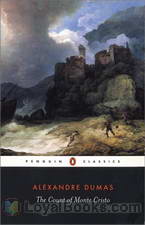 The Count of Monte Cristo
The Count of Monte Cristo
Written by French author Alexandre Dumas, The Count of Monte Cristo follows the life of Edmond Dantes as he embarks on a journey of revenge after being wrongly imprisoned and set up by none other than his so-called friends. Set during the years after the fall of Napoleon’s empire, the story unwinds in several locations including Paris, Marseilles, Rome, Monte Cristo and Constantinople. A handsome young sailor and soon to be ship captain Edmond Dantes seems to have it all in life, as he returns to Marseilles to wed the love of his life and fiancée, the beautiful Mercedes... | |
 The Three Musketeers
The Three Musketeers
The Three Musketeers follows the adventures of the young Gascon nobleman, D’Artagnan and his three trusted friends who served as musketeers in the king’s regiment – Athos, Porthos & Aramis. Written by Alexandre Dumas, the book was a bestseller during the time of its publication and it remains so even today. It follows the timeless theme of friendship and bravery. The main protagonist of the story is D’Artagnan who travels to Paris to realize his dreams of becoming one of the musketeers for the king... | |
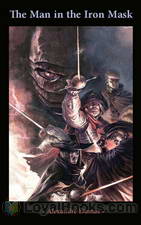 The Man in the Iron Mask
The Man in the Iron Mask
The Man in the Iron Mask by Alexandre Dumas is part of the novel The Vicomte of Bragelonne: Ten Years After, published in serial form between 1857-50. It is also the last of the D'Artagnan stories written by Dumas and the three musketeers are the real heroes of the story, though the title is given to the man in the iron mask. The story opens with Aramis (one of the musketeers who is now a priest) taking the last confession of a prisoner who is condemned to be executed soon. His confession comes as a thunderbolt to the former musketeer... | |
 Twenty Years After
Twenty Years After
First serialized from January to August, 1845, Twenty Years After is the second book in The D’Artagnan Romances, and follows the gallant adventures of the musketeers, as they are once again summoned to alleviate the various threats that lurk in the political scene of France, as the country is threatened by a possible uprising. Enriched with exciting and well-developed characters, the novel adds more detail to its familiar characters, as the musketeers have matured and are portrayed in a more introspective light... | |
 The Vicomte De Bragelonne
The Vicomte De Bragelonne
After The Three Muskateers and Twenty Years After the adventurous story of Athos, Porthos, Aramis and D'Artagnan continues!The Vicomte of Bragelonne: Ten Years Later (French: Le Vicomte de Bragelonne ou Dix ans plus tard) is the last of the Musketeer novels. It is usually divided into four volumes and this first volume contains chapters 1-75. | |
 Louise de la Valliere
Louise de la Valliere
After The Three Muskateers and Twenty Years After the adventurous story of Athos, Porthos, Aramis and D'Artagnan continues! The Vicomte of Bragelonne: Ten Years Later (French: Le Vicomte de Bragelonne ou Dix ans plus tard) is the last of the Musketeer novels. It is usually divided into four volumes and this third volume contains chapters 141-208. | |
 Ten Years Later
Ten Years Later
After The Three Muskateers and Twenty Years After the adventurous story of Athos, Porthos, Aramis and D'Artagnan continues!The Vicomte of Bragelonne: Ten Years Later (French: Le Vicomte de Bragelonne ou Dix ans plus tard) is the last of the Musketeer novels. It is usually divided into four volumes and this second volume contains chapters 76-140. | |
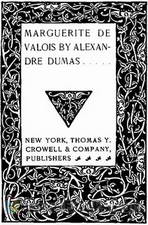 Marguerite de Valois
Marguerite de Valois
A historical fiction novel set in Paris (1572) during Charles IX's reign and the French Wars of Religion. Marguerite de Valois, daughter of deceased Henry II, is the novel's protagonist set against the infamous schemes of the Catholic power player, Catherine de Medici. | |
 Chicot the Jester
Chicot the Jester
This sequel to Dumas' “Marguerite de Valois” begins four years after the sudden death of King Charles IX and succession of his brother Henry III. The reign of King Henry III was plagued with rebellion and political intrigue due to the War of the Three Henries, where his regency was challenged by King Henry of Navarre (leader of the Huguenots) and Henry I, Duke of Guise (leader of the Catholic League). Dumas weaves two main storylines through this turbulent backdrop: one of the love ignited between le Comte de Bussy and la Dame de Monsoreau, and another of the friendship between King Henry III and his truly unique jester, Chicot (Jean-Antoine d'Anglerais). | |
 Marie Antoinette Romances, Vol 5: The Countess of Charny
Marie Antoinette Romances, Vol 5: The Countess of Charny
This 5th volume of the Marie Antoinette Romances begins after the fall of the Bastille and the March on Versailles, which forced Louis XVI and his court to be escorted back to Paris. In Paris, political factions battle over the fate of the nation, the royal family, and anyone with royalist sympathies. Our heroes and our anti-heroes must navigate the blood-streaked landscape while keeping their necks out of the guillotine. All the while, the prophetic Balsamo urges on the revolution: "the quantity of blood which must be shed before the sun rises on the free world ... | |
 Marie Antoinette Romances, Vol 2: The Mesmerist's Victim
Marie Antoinette Romances, Vol 2: The Mesmerist's Victim
This 2nd volume of the Marie Antoinette Romances continues the intrigues of "Balsamo, The Magician" and adds to them the schemes of philosophers and the stirrings of revolution. Balsamo carries on his occult tactics to weaponize the state secrets that he gained in the previous volume. A serious romance and illness takes root in the court of King Louis XV, convincing one of the leading philosophic minds of the era, Jean-Jacques Rousseau, that “the breath of heaven will blast an age and a monarchy.” - Summary by jvanstan | |
 Marie Antoinette Romances, Vol 1: Balsamo, The Magician
Marie Antoinette Romances, Vol 1: Balsamo, The Magician
This is the first volume of Dumas' Marie Antoinette Romances . This historical fiction chronicles the strange events surrounding the fall of the French monarchy and rise of revolutionaries so terrifying that the period is still called "The Reign of Terrors" . In this volume, a renowned magician, Count Alessandro di Cagliostro , employs various occult tactics, like hypnotism and necromancy, to gain state secrets. Balsamo claims to be plotting against the Bourbons, but one must wonder whether this 3000 year old sorcerer has an ulterior motive... - Summary by jvanstan | |
 Taking the Bastile
Taking the Bastile
Pitou lost his mother when he was small. He was raised by a stern aunt who did not really love him. He starts knowing the world by going to service. How can this man, Pitou the Peasant go on to influence the whole state? How can he go on and take a part in the French revolution? Can his motivation, coming from what he did not have, be enough? - Summary by Stav Nisser | |
By: Alfred de Musset (1810-1857) | |
|---|---|
 The Confession of a Child of the Century
The Confession of a Child of the Century
In this autobiographic novel, an aging man reflects on his past. We are witness to the relationships he has along the way, his mistakes, and finally- in the most unexpected and honorable way- the sudden developement of his belief in god. | |
By: Alice Turner Curtis (1863-??) | |
|---|---|
 A Yankee Girl at Fort Sumter
A Yankee Girl at Fort Sumter
Sylvia Fulton is a ten-years-old girl from Boston who stayed in Charleston, South Carolina, before the opening of the civil war. She loves her new home, and her dear friends. However, political tensions are rising, and things start to change. Through these changes, Silvia gets to know the world better: from Estrella, her maid, she starts to understand what it is to be a slave, from her unjust teacher she learns that not all beautiful people are perfect, and from the messages she carries to Fort Sumter she learns what is the meaning of danger. However, this is a lovely book, written mostly for children. | |
 Little Maid of Province Town
Little Maid of Province Town
Plucky eight year old Anne Nelson, living in Provincetown on the tip of Cape Cod, is determined to bring the Revolutionary War to an end so that she can be reunited with her soldier father. Will she succeed in carrying an important message from Boston to Newburyport, warning the American troops to be prepared, or will she be caught by the English ships patrolling the harbor? | |
By: Ambrose Bierce (1842-1914?) | |
|---|---|
 In the Midst of Life; Tales of Soldiers and Civilians
In the Midst of Life; Tales of Soldiers and Civilians
These stories detail the lives of soldiers and civilians during the American Civil War. This is the 1909 edition. The 1909 edition omits six stories from the original 1891 edition; these six stories are added to this recording (from an undated English edition). The 1891 edition is entitled In The Midst Of Life; Tales Of Soldiers And Civilians. The Wikipedia entry for the book uses the title Tales of Soldiers and Civilians. Ambrose Gwinnett Bierce (June 24, 1842 – after December 26, 1913) was an American editorialist, journalist, short story writer, fabulist and satirist... | |
By: Amelia E. Barr (1831-1919) | |
|---|---|
 Maid of Maiden Lane
Maid of Maiden Lane
The Maid of Maiden lane is a wonderful love story in which Mrs. Barr intertwines the hot political and social issues that were occurring in America during the last decade of the 18th century with an excellent love story plot. Some of those issues include: the moral dilemma and debate over the French Revolution, and how that event touched the lives of the immigrants in America; the prejudices between the immigrants from England, and those from France or Holland, and how those animosities affected the ordinary lives of the people; and the political debate over titles, foreign policy, and such things(for example)as where the capital of the nation was to reside, New York or Philadelphia... | |
By: Anatole France (1844-1924) | |
|---|---|
 Gods are Athirst
Gods are Athirst
The Gods Are Athirst (French: Les dieux ont soif, also translated as The Gods Are Thirsty or The Gods Will Have Blood) is a 1912 novel by Anatole France. The story follows the young Parisian painter Évariste Gamelin, who rises speedily from his humble beginnings to a member of the Revolutionary Tribunal in the second and third year of the French Revolution. In brilliant prose, Anatole France describes how Évariste's idealism turns into fanaticism, and he allows more and more heads to roll and blood to flow, placing himself and those he loves into ever greater danger. | |
By: Andre Norton (1912-2005) | |
|---|---|
 Rebel Spurs
Rebel Spurs
In 1866, only men uprooted by war had reason to ride into Tubacca, Arizona, a nondescript town as shattered and anonymous as the veterans drifting through it. So when Drew Rennie, newly discharged from Forrest’s Confederate scouts, arrived leading everything he owned behind him—his thoroughbred stud Shiloh, a mare about to foal, and a mule—he knew his business would not be questioned. To anyone in Tubacca there could be only one extraordinary thing about Drew, and that he could not reveal: his name, Rennie... | |
 Ride Proud, Rebel!
Ride Proud, Rebel!
Drew Rennie, served as a cavalry scout in Confederate general John Hunt Morgan's command. He had left home in 1862 after a final break with his harsh grandfather, who despised him since his birth because of his mother's runaway marriage to a Texan. During the final year of conflict Drew has the additional responsibility of looking out for his headstrong fifteen-year-old cousin Boyd, who has run away from home to join Morgan's command and has a lot to learn in the school of hard knocks the army provides. The story follows the two of them and a new friend, Anson Kirby, through campaigns in Kentucky, Tennessee and later on deeper into the South, first with Morgan and later under Forrest. | |
By: Andy Adams | |
|---|---|
 The Log of a Cowboy
The Log of a Cowboy
The Log of a Cowboy is an account of a five-month drive of 3,000 cattle from Brownsville, Texas, to Montana in 1882 along the Great Western Cattle Trail. Although the book is fiction, it is firmly based on Adams's own experiences on the trail, and it is considered by many to be the best account of cowboy life in literature. Adams was disgusted by the unrealistic cowboy fiction being published in his day; The Log of a Cowboy was his response. It is still in print, and even modern reviewers consider it a compelling classic... | |
By: Anna Maria Porter (1780-1832) | |
|---|---|
 Don Sebastian; or, The House of the Braganza: An Historical Romance, Volume 1
Don Sebastian; or, The House of the Braganza: An Historical Romance, Volume 1
Romantic history of the fictional Don Sebastian, which was suggested to the author by a plaque commemorating a mysterious "Portuguese stranger". There is a historical backdrop, but the story itself and the characters are figments of her imagination. - Summary by Lynne T | |
By: Anne Manning (1807-1879) | |
|---|---|
 Cherry and Violet
Cherry and Violet
A Tale of the Great Plague. 1666 was a difficult year in London. With its sordid materialism and its coarse handling of things most sacred, not merely does Manning see, as an Englishwoman, the grandeur of its struggles, but she sees its best embodiment in the tragedy of an almost perfect life. In her description of the plague , followed by The Great Fire, Manning is taken out of her comfort zone to the sordid realities. Her answer is to take Mistress Cherry to a country house in Berkshire, where peace and tranquility are to be found. - Summary by Lynne Thompson | |
By: Annie F. Johnston (1863-1931) | |
|---|---|
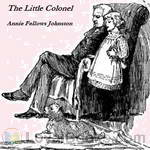 The Little Colonel
The Little Colonel
The scene of this story is laid in Kentucky. Its heroine is a small girl, who is known as the Little Colonel, on account of her fancied resemblance to an old-school Southern gentleman, whose fine estate and old family are famous in the region. (Introduction taken from original book.) | |
By: Annie T. Colcock | |
|---|---|
 Margaret Tudor A Romance of Old St. Augustine
Margaret Tudor A Romance of Old St. Augustine
| |
By: Anthony Munday (1560? -1633) | |
|---|---|
 Sir Thomas More
Sir Thomas More
Sir Thomas More is a collaborative Elizabethan play by Anthony Munday and others depicting the life and death of Thomas More. It survives only in a single manuscript, now owned by the British Library. The manuscript is notable because three pages of it are considered to be in the hand of William Shakespeare and for the light it sheds on the collaborative nature of Elizabethan drama and the theatrical censorship of the era. The play dramatizes events in More's life, both real and legendary, in an episodic manner in 17 scenes, unified only by the rise and fall of More's fortunes. | |
By: Anthony Trollope (1815-1882) | |
|---|---|
 Can You Forgive Her?
Can You Forgive Her?
The first book in the political Palliser series, the novel deals with parliamentary politics, while concurrently devoting its pages to much more intricate issues. Presenting three parallel stories, the parliamentary novel draws its attention to three contrasting young women, who are beset with arduous decisions concerning courtship and marriage. Additionally, the novel covers topics including women in conventional society and their discernment, while illustrating the tentative stages of marriage with all the attributes of sacrifice, compromise and temptation... | |
 The Eustace Diamonds
The Eustace Diamonds
Lizzie Greystock, a fortune-hunter who ensnares the sickly, dissipated Sir Florian Eustace, is soon left a very wealthy widow and mother. While clever and beautiful, Lizzie has several character flaws; the greatest of these is an almost pathological delight in lying, even when it cannot benefit her. Before he dies, the disillusioned Sir Florian discovers all this, but does not think to change the generous terms of his will. The diamonds of the book’s title are a necklace, a Eustace family heirloom that Sir Florian gave to Lizzie to wear... | |
 Phineas Redux
Phineas Redux
Phineas Redux is the fourth in Trollope’s series of six Palliser novels. At the end of Phineas Finn, the second novel in the series, Phineas had to return to Ireland to marry his childhood sweetheart, who was expecting their child. As Phineas Redux opens, Phineas is working as a Poorhouse Inspector in Ireland. His wife having died in childbirth, he finds his existence dull and unsatisfying. Phineas’ returns to England; his career advances and his romantic adventures continue, while we encounter many familiar characters including Glencora and Plantagenet Palliser, Madame Goesler, and Lizzie Eustace and her husband the Reverand Mr. Aemelius. | |
 The Prime Minister
The Prime Minister
The Prime Minister is the fifth in Trollope's series of six Palliser novels. With Phineas' difficulties resolved, Trollope introduces new characters. A respectable young girl forsakes the man her family had always intended her to marry when she falls in love with a man of foreign extraction and an unknown family. He has a gentleman's education and manners, but his family background and financial means are mysterious. Is he really a gentleman? Meanwhile, Plantagenet Palliser becomes Prime Minister of a shaky coalition government, and Glencora and Madame Goessler are busy with the ensuing social obligations. | |
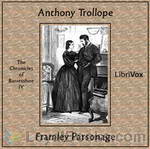 Framley Parsonage
Framley Parsonage
Framley Parsonage is the fourth novel in Anthony Trollope's series known as the "Chronicles of Barsetshire", first published in serial form in the Cornhill Magazine in 1860. "Of all novelists in any country, Trollope best understands the role of money. Compared with him even Balzac is a romantic." — W. H. Auden | |
 Miss Mackenzie
Miss Mackenzie
The thirty-five year-old (hence utterly over-the-hill) Miss Margaret Mackenzie, having devoted her life to others, suddenly finds herself with no one to care for, and in possession of a moderate fortune. Having money, she is now much sought-after and no longer universally deemed too old to marry. Partly because she has spent her life taking care of the brother whose money she has now inherited, she has no experience of wealth or popularity. Miss Mackenzie is the definition of “other-oriented. (Indeed, Trollope originally considered naming the novel, and his heroine, “Griselda”, presumably to invoke the folkloric character’s qualities of stolid obedience and endless patience... | |
 The Golden Lion of Granpere
The Golden Lion of Granpere
Time to do a short Continental trip with Trollope and see if we agree with Walpole. "...not only Trollope's very best shorter book, but one of the most charming idylls in English literature. - . . It has all the colour and richness and cohesion of something done irresistibly." -Walpole . The storyline is simple - boy meets girl - parents object - trials and tribulations follow - and then the story reaches it's conclusion - but you will need to find what that is for yourself ! | |
 Castle Richmond
Castle Richmond
| |
 La Vendée
La Vendée
| |
By: Anton Chekhov (1860-1904) | |
|---|---|
 The Cherry Orchard
The Cherry Orchard
The Cherry Orchard is Russian playwright Anton Chekhov's last play. It premiered at the Moscow Art Theatre 17 January 1904 in a production directed by Constantin Stanislavski. Chekhov intended this play as a comedy and it does contain some elements of farce; however, Stanislavski insisted on directing the play as a tragedy. Since this initial production, directors have had to contend with the dual nature of this play. The play concerns an aristocratic Russian woman and her family as they return to the family's estate (which includes a large and well-known cherry orchard) just before it is auctioned to pay the mortgage... | |
By: Armin Stein (1840-1929) | |
|---|---|
 Katharine von Bora: Dr. Martin Luther's Wife
Katharine von Bora: Dr. Martin Luther's Wife
This is a fictionalized biography of the wife of the reformer Dr. Martin Luther. In the author's words, he hopes that "people may learn to know the wife of its greatest man,—not by name only, but as her husband's 'helpmeet,' in the truest sense of the word, as a pattern of domestic virtue, and as a pearl among women." - Summary by Dory Smith | |
By: Arnold Bennett (1867-1931) | |
|---|---|
 Ghost: A Modern Fantasy
Ghost: A Modern Fantasy
The novel opens with Carl Foster, a recently qualified doctor, coming to London to try and make his fortune. He meets a famous tenor, Signor Alresca, who suffers a dreadful injury backstage and Foster tends to him. He thus meets the lead soprano, Rosetta Rosa, and falls hopelessly in love with her.Alresca takes Foster under his wing and they travel to Alresca's home in Bruges. It is clear to Foster that Alresca has some strange obsession. Foster also notices a stranger who seems to be dogging his footsteps.Things take an even more sinister turn when Alresca inexplicably dies. . . | |
By: Arthur Thomas Quiller-Couch (1863-1944) | |
|---|---|
 The Blue Pavilions
The Blue Pavilions
| |
 Hetty Wesley
Hetty Wesley
| |
By: Augusta J. Evans (1835-1909) | |
|---|---|
 Inez A Tale of the Alamo
Inez A Tale of the Alamo
| |
By: Austin Bishop | |
|---|---|
 Tom of the Raiders
Tom of the Raiders
Young Adult historical fiction of a young man joining the Union Army and taking part in the Great Locomotive Chase. | |
By: Baroness Emma Orczy (1865-1947) | |
|---|---|
 Pimpernel and Rosemary
Pimpernel and Rosemary
A novel in the Scarlet Pimpernel series that features Peter Blakeney, a descendant of the Scarlet Pimpernel. Peter's adventures take him to Hungary and much intrigue involving his good friend, Rosemary, Nazis, and spies ensue. - Summary by Holly Rushik | |
 Beau Brocade
Beau Brocade
Beau Brocade is a historical fiction set in England in the early 1700's. The hero Beau is a wanted highwayman, who takes from the rich to help the poor. - Summary by Deon Gines | |
 Leatherface: A Tale of Old Flanders
Leatherface: A Tale of Old Flanders
A romantic, political adventure story set in the late 1500's, during the Spanish rule over the Netherlands, in the city of Ghent. Leatherface is an Orangist and emerges to lead the Ghent citizens to rebel and win back their freedom. | |
By: Baroness Emmuska Orczy (1865-1947) | |
|---|---|
 El Dorado
El Dorado
If you've read and loved the exciting classic The Scarlet Pimpernel then you'd probably be delighted to follow the further adventures of the dashing Sir Percy Blakeney. El Dorado by Baronness “Emmuska” Orczy depicts the intrepid swordsman and escape artist in the role of savior of the French royal family. Published in 1913, El Dorado was the fourth in the Pimpernel series of eleven books, numerous short stories and other related writings about her famous British adventurer. However, Orczy did not always follow a strict chronological sequence while publishing the novels and hence, there is plenty of overlap between the time frames of the stories... | |
 The Elusive Pimpernel
The Elusive Pimpernel
First Published in 1908, The Elusive Pimpernel by Baroness Orczy is the 4th book in the classic adventure series about the Scarlet Pimpernel. | |
By: Baroness Orczy (1865-1947) | |
|---|---|
 I Will Repay
I Will Repay
This is a sequel novel to the Scarlet Pimpernel. The second Pimpernel book written by Orczy, it comes (chronologically) third in the series and should be read after Sir Percy Leads the Band and before The Elusive Pimpernel. | |
 Laughing Cavalier; Ancestor of the Scarlet Pimpernel
Laughing Cavalier; Ancestor of the Scarlet Pimpernel
The enigmatic smile of The Laughing Cavalier of Franz Hals' famous painting invites you to wonder just what mischievousness hides behind that face. In this novel, inspired by the painting, Baroness Orczy recounts the adventures of an ancestor of her famous character, the Scarlet Pimpernel. Set in Holland during the turbulent times of 1623/1624, this is the story of a swashbuckling romanticist, whose desire for wealth and success always seems to be eclipsed by his sense of what is right and gentlemanly... | |
By: Basil King (1859-1928) | |
|---|---|
 Wild Olive
Wild Olive
Norrie Ford, having been unfairly convicted of murder, has escaped. A lucky chance finds him being rescued by a mysterious girl (the Wild Olive of the title), who sets him up with a new life under a new name in Argentina. He makes such a success of his time there that he is posted back to New York by the company he works for – but not before he has become engaged to be married. Back in New York, he meets up again with the Wild Olive . . . | |
 Thread of Flame
Thread of Flame
Edward wakes up on board a ship crossing the Atlantic, on his return from the Great War – however, he finds that his memory of who he is and where he comes from is only fragmentary. The book follows his fascinating journey back to health and his growing realisation about what effect the War and its aftermath has had on him and also on the people he meets - as well as his family. | |
By: Benjamin Disraeli (1804-1881) | |
|---|---|
 Alroy The Prince Of The Captivity
Alroy The Prince Of The Captivity
| |
By: Bolesław Prus (1847-1912) | |
|---|---|
 Pharaoh and the Priest
Pharaoh and the Priest
The Pharaoh and the Priest (Polish: Faraon) is the fourth and last major novel by the Polish writer Bolesław Prus. It was the sole historical novel by an author who had earlier disapproved of historical novels on the ground that they inevitably distort history. Pharaoh has been described by Czesław Miłosz as a "novel on mechanisms of state power and, as such, probably unique in world literature of the nineteenth century.... Prus, in selecting the reign of 'Pharaoh Ramses XIII' in the eleventh century BCE, sought a perspective that was detached from pressures of topicality and censorship... | |
By: Boyd Cable (1878-1943) | |
|---|---|
 Between the Lines
Between the Lines
This book, all of which has been written at the Front within sound of the German guns and for the most part within shell and rifle range, is an attempt to tell something of the manner of struggle that has gone on for months between the lines along the Western Front, and more especially of what lies behind and goes to the making of those curt and vague terms in the war communiqués. I think that our people at Home will be glad to know more, and ought to know more, of what these bald phrases may actually signify, when, in the other sense, we read 'between the lines.' | |
By: Burton Egbert Stevenson (1872-1962) | |
|---|---|
 A Soldier of Virginia
A Soldier of Virginia
| |
By: Byron A. Dunn (1842-1926) | |
|---|---|
 Raiding with Morgan
Raiding with Morgan
It is a fictional tale of cavalry actions during the U.S. Civil War, under General John Morgan. | |
By: C. A. (Caroline Augusta) Frazer | |
|---|---|
 Atmâ A Romance
Atmâ A Romance
| |
By: C. Bryson Taylor (1880-) | |
|---|---|
 Nicanor - Teller of Tales A Story of Roman Britain
Nicanor - Teller of Tales A Story of Roman Britain
| |
By: Charles Alexander Eastman (1858-1939) | |
|---|---|
 Indian Child Life
Indian Child Life
The author was raised as an American Indian and describes what it was like to be an Indian boy (the first 7 chapters) and an Indian Girl (the last 7 chapters). This is very different from the slanted way the white man tried to picture them as 'savages' and 'brutes.'Quote: Dear Children:—You will like to know that the man who wrote these true stories is himself one of the people he describes so pleasantly and so lovingly for you. He hopes that when you have finished this book, the Indians will seem to you very real and very friendly... | |
By: Charles Carleton Coffin (1823-1896) | |
|---|---|
 Daughters of the Revolution and Their Times 1769 - 1776 A Historical Romance
Daughters of the Revolution and Their Times 1769 - 1776 A Historical Romance
| |
By: Charles Franklin Carter | |
|---|---|
 Old Mission Stories of California
Old Mission Stories of California
| |
By: Charles King | |
|---|---|
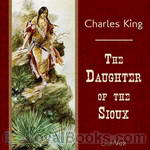 The Daughter of the Sioux,
The Daughter of the Sioux,
Charles King (1844 – 1933) was a United States soldier and a distinguished writer. He was the son of Civil War general Rufus King and great grandson of Rufus King, one of the signers of the Declaration of Independence. He graduated from West point in 1866 and served in the Army during the Indian Wars under George Crook. He was wounded in the arm forcing his retirement from the regular army. During this time he became acquainted with Buffalo Bill Cody. King would later write scripts for several of Cody’s silent films... | |
By: Charles Kingsley | |
|---|---|
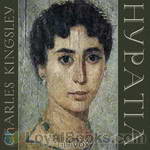 Hypatia
Hypatia
Charles Kingsley (June 12 1819 - January 23 1875) was an English divine, university professor, historian, and novelist, particularly associated with the West Country and north-east Hampshire. As a novelist, his chief power lay in his descriptive faculties, which are evident in this novel as he pictures the Egyptian desert and the ancient city Alexandria. Hypatia, 1st published in 1853, is set in 5th Century A.D. Egypt. It centers upon a young orphan monk from a desert monastery who feels called to continue his religious life in the city... | |
By: Charles Major (1856-1913) | |
|---|---|
 When Knighthood Was in Flower
When Knighthood Was in Flower
Set during the Tudor period of English history, When Knighthood Was in Flower tells the tribulations of Mary Tudor, a younger sister of Henry VIII of England who has fallen in love with a commoner. However, for political reasons, King Henry has arranged for her to wed King Louis XII of France and demands his sister put the House of Tudor first, threatening, "You will marry France and I will give you a wedding present – Charles Brandon's head!" | |
By: Charles Waddell Chesnutt (1858-1932) | |
|---|---|
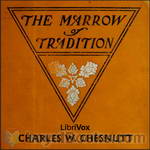 The Marrow of Tradition
The Marrow of Tradition
In The Marrow of Tradition, Charles W. Chesnutt--using the 1898 Wilmington, North Carolina massacre as a backdrop--probes and exposes the raw nerves and internal machinery of racism in the post-Reconstruction-era South; explores how miscegenation, caste, gender and the idea of white supremacy informed Jim Crow laws; and unflinchingly revisits the most brutal of terror tactics, mob lynchings. (Introduction by James K. White) | |
By: Charles Watts Whistler (1856-1913) | |
|---|---|
 Havelok the Dane: A Legend of Old Grimsby and Lincoln
Havelok the Dane: A Legend of Old Grimsby and Lincoln
Troy, Athens, Rome... each has its founding legend. So too does the Lincolnshire town of Grimsby, once the largest fishing port in the world. Havelok the Dane probably derives from a folk-tale, orally passed down before assuming written form - first in Anglo-Norman French, later in Middle English verse (c. 1280-1300). It tells of the rescue of the Danish prince from a wicked regent, who has tried to procure Havelok's murder. Grim the fisher, the appointed hit-man, thwarts the plan by spiriting the lad to England, where Grim settles with his family on the coast, adopting Havelok as his foster-son and naming the new community after himself... | |
By: Charlotte Brontë (1816-1855) | |
|---|---|
 Shirley
Shirley
Shirley is an 1849 social novel by the English novelist Charlotte Brontë. It was Brontë's second published novel after Jane Eyre (originally published under Brontë's pseudonym Currer Bell). The novel is set in Yorkshire in the period 1811–1812, during the industrial depression resulting from the Napoleonic Wars and the War of 1812. The novel is set against a backdrop of the Luddite uprisings in the Yorkshire textile industry. | |
By: Charlotte M. Yonge (1823-1901) | |
|---|---|
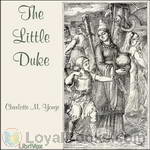 The Little Duke
The Little Duke
The Little Duke by Charlotte M. Yonge is historical fiction based on the the life of Richard, Duke of Normandy. He assumes the title of Duke at only 8 years of age, after his father is murdered. The story first appeared in her magazine, The Monthly Packet, as a serial. | |
By: Charlotte Mary Yonge (1823-1901) | |
|---|---|
 Armourer's Prentices
Armourer's Prentices
Set in the sixteenth century, two young boys are left orphans and are turned out of their home by their older brother, or, more particularly, his shrewish wife. John has taken over their father's position as verdurer, but what are young Ambrose and Stephen to do? Visit and seek counsel from their old and infirm uncle, who lives on charity after leading a military life? Or chase the dream of finding their ne'er-do-well maternal uncle, who has reputedly made his fortune in the king's court. | |
 A Modern Telemachus
A Modern Telemachus
| |
By: Christopher Marlowe (1564-1593) | |
|---|---|
 Edward II
Edward II
Christopher Marlowe's Elizabethan tragedy focuses on the downfall of King Edward II, whose love for his favorite courtier, Piers Gaveston, leads to rebellion. | |
By: Clara Reeve (1729-1807) | |
|---|---|
 The Old English Baron
The Old English Baron
The story follows the adventures of Sir Philip Harclay, who returns to medieval England to find that the castle seat and estate of his friend Lord Lovel have been usurped. A series of revelations, horrors and betrayals climax in a scene of single combat in which good battles evil for the return of the prize. | |
By: Clayton Knight (1891-1969) | |
|---|---|
 We Were There at the Normandy Invasion
We Were There at the Normandy Invasion
D-Day: 6 June 1944. The date of the invasion of the Normandy Coast of France by the Allies. This novel gives a different look at that invasion than most of us have ever seen. It tells of a young French boy, André Gagnon, and his exciting adventures as he helps the Maquis , a shot down British airman, and the American soldiers in their successful attempt to liberate France from German occupation. An entertaining and informative family friendly tale. - Summary by Wayne Cooke | |
By: Clemence Dane (1888-1965) | |
|---|---|
 Regiment of Women
Regiment of Women
Set in a small town in Edwardian England, Regiment of Women is about the relationship between two teachers at a private girls' school. One of them, Clare Hartill, is in her mid-thirties and runs the school in all but name. Most of the girls are devoted to Hartill and gladly suffer under her strict but charismatic rule. The other teacher is Alwynne Durand, an attractive nineteen-year-old woman who lives with Elsbeth Loveday, her unmarried aunt and guardian. When Durand starts teaching at the school she is immediately popular with her students but also excites Hartill's attention... | |
By: D. H. Lawrence (1885-1930) | |
|---|---|
 Kangaroo
Kangaroo
"Kangaroo" is the nickname of a character in this novel, Benjamin Cooley, who was a charismatic leader in the fascist movement of ex-soldiers who fought in the Australian army in WWII. The story's main character is an international journalist, Richard Lovat Somers who, with his wife, comes to rent a house next door to Jack Calcott and his wife who are natural-born Australians through-and-through. Jack is in league with Kangaroo and tries to persuade Lovat to join their political movement conflicting with the Socialist political faction in the country... | |
By: D. K. Broster (1877-1950) | |
|---|---|
 Wounded Name
Wounded Name
Laurent de Courtomer, the son of a French aristocratic emigré and an Englishwoman, returns to France upon the Bourbon restoration following Napoleon's defeat in 1814. He meets a young Breton Royalist officer who quite turns his head with hero worship: Aymar de la Rocheterie. But when Napoleon escapes from Elba and war breaks out again, Laurent meets Aymar again, severely wounded and under suspicion of treason. As Laurent nurses him back to health, the evidence against Aymar seems to become worse and worse. Will Aymar be able to clear his name, and will Laurent's devotion to him remain unshaken? - summary by Elin | |
By: Daisy Ashford (1881-1972) | |
|---|---|
 The Young Visiters, or Mr. Salteena's Plan
The Young Visiters, or Mr. Salteena's Plan
The Young Visiters is a comic romance novella that parodies upper class society of late Victorian England. Social climber Alfred Salteena introduces his young lady friend Ethel to a genuine gentleman named Bernard and, to his irritation, they hit it off. But Bernard helps Alfred in his plan to become a gentleman, which, Alfred hopes, will help him win back Ethel. | |
By: Daniel Defoe (1659/1661-1731) | |
|---|---|
 The History of the Plague in London
The History of the Plague in London
The History of the Plague in London is a historical novel offering an account of the dismal events caused by the Great Plague, which mercilessly struck the city of London in 1665. First published in 1722, the novel illustrates the social disorder triggered by the outbreak, while focusing on human suffering and the mere devastation occupying London at the time. Defoe opens his book with the introduction of his fictional character H.F., a middle-class man who decides to wait out the destruction of the plague instead of fleeing to safety, and is presented only by his initials throughout the novel... | |
 A Journal of the Plague Year, written by a citizen who continued all the while in London
A Journal of the Plague Year, written by a citizen who continued all the while in London
| |
 The Fortunate Mistress (Parts 1 and 2) or a History of the Life of Mademoiselle de Beleau Known by the Name of the Lady Roxana
The Fortunate Mistress (Parts 1 and 2) or a History of the Life of Mademoiselle de Beleau Known by the Name of the Lady Roxana
| |
 Memoirs of a Cavalier A Military Journal of the Wars in Germany, and the Wars in England. From the Year 1632 to the Year 1648.
Memoirs of a Cavalier A Military Journal of the Wars in Germany, and the Wars in England. From the Year 1632 to the Year 1648.
| |
By: Deborah Alcock (1835-1913) | |
|---|---|
 Spanish Brothers (Dramatic Reading)
Spanish Brothers (Dramatic Reading)
Juan and Carlos Meñaya have longed to find their father ever since they were little. Their dream starts to get lost, though, as they grow up and go separate ways. Juan goes off to war and falls under the influence of a Huguenot prisoner while Carlos becomes a monk and begins to discover the Bible for himself. - Summary by Adele de Pignerolles Dramatis Personae Narration by Adele de Pignerolles and Rapunzelina Carlos, read by Joseph Tabler Juan Rodrigo, read by Aaron Rivera Dolores, read by Sonia Fray... | |
By: Earl Reed (1863-1931) | |
|---|---|
 Tales of a Vanishing River
Tales of a Vanishing River
The background of this collection of sketches and stories is the country through which flowed one of the most interesting of our western rivers before its destruction as a natural waterway. This book is not a history. It is intended as an interpretation of the life along the river that the author has come in contact with during many years of familiarity with the region. Names of places and characters have been changed for the reason that, while effort has been made to adhere to artistic truth, literary liberties have been taken with facts when they have not seemed essential to the story. - Summary by Earl H. Reed | |
By: Edgar Rice Burroughs (1875-1950) | |
|---|---|
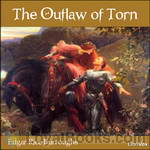 The Outlaw of Torn
The Outlaw of Torn
The story is set in 13th century England and concerns the fictitious outlaw Norman of Torn, who purportedly harried the country during the power struggle between King Henry III and Simon de Montfort. Norman is the supposed son of the Frenchman de Vac, once the king's fencing master, who has a grudge against his former employer and raises the boy to be a simple, brutal killing machine with a hatred of all things English. His intentions are partially subverted by a priest who befriends Norman and teaches him his letters and chivalry towards women... | |
By: Edna Lyall (1857-1903) | |
|---|---|
 Derrick Vaughan, Novelist
Derrick Vaughan, Novelist
| |